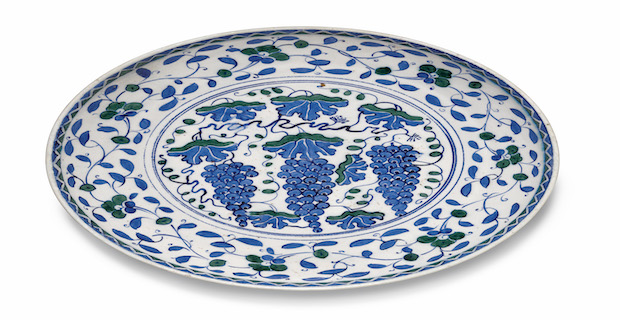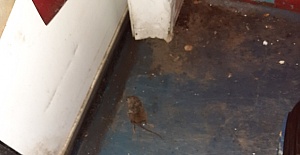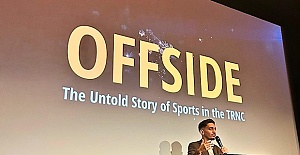AVRUPA TIMES/LONDON-TREASURES FROM THE OTTOMAN EMPIRE.1 MAY 2019, SOTHEBY’S LONDON. A rare and important Iznik ‘Golden Horn’ Pottery Dish, Turkey, circa 1530 (illustrated above, est. £300,000- 500,000)This rare intact example of Iznik ‘Golden Horn’ pottery represents an opportunity to acquire one of the last examples of the unusual style remaining in private hands. Last offered at Sotheby’s in 1986 – when it was also the cover of the catalogue – the remarkable piece has remained in a private collection since.Predominantly decorated with a series of floral concentric spirals, the motif of the group does not seem to evolve from an Iznik antecedent. Rather, the inspiration for the design seems to come from contemporary illumination, namely, Imperial illumination found on the background of the Sultan’s tugra – the calligraphic monogram, seal or signature that was created, issued and controlled solely by the Ottoman Imperial Chancery in the Topkapi Palace.
The wares take their name from a waterway on the southern shores of Istanbul, after a selection of fragments discovered in the early twentieth century during excavations. One of the most famous pieces of ‘Golden Horn’ is the Godman Flask, dating 1529, which is in the collection of the British Museum.
A portrait of Suleyman the Magnificent, by a follower of Gentile Bellini, Italy, probably Venice, circa 1520 (illustrated on page one, est. £250,000-350,000)
When he came to power in 1520, Suleyman II inherited a vast empire and was responsible for turning Constantinople, now Istanbul, into an important intellectual centre. He became known locally as ‘the Lawgiver’, due to his important legal reformations, and provoked fascination in Europe through his military conquests, prodigious administrative restructuring and keen artistic patronage. One of the few Western images of an Eastern potentate by a European artist, this landmark portrait of Suleyman the Magnificent likely served as a primary source of inspiration for many later portraits, drawings, prints and medals of the Sultan.
Suleyman does not seem to have commissioned any portraits, and so details of his physical appearance were likely conveyed to European artists through sketches created by those who had accompanied foreign embassies to the Ottoman court. Indeed, it is very likely that either Andrea Gritti or his son Alvise Gritti was the patron behind this portrait. Before being elected Doge of Venice in 1523, Andrea spent most of his life in Constantinople as a merchant and diplomat looking after Venetian interests. His son Alvise, born to an Ottoman woman with whom Andrea had an affair, played an important political role as an advisor in the Ottoman state. Passionate about the arts, Alvise promoted a number of architects and artists such as Jacopo Sansovino and Titian.
The earliest-known surviving depictions of Suleyman include a drawing by Albrecht Dürer in the Musée Bonnat, Bayonne, and a copper plate print by Italian lithography master ‘A.A’ in the Graphische Samlung Albertina, Vienna. This portrait bears striking similarities to both illustrations – from the shape of his turban and the large drooping collar of his robe to his aquiline nose and protruding chin.
An Ottoman brocade ‘Kemha’ panel with undulating tulips, Turkey, 16th century (est. £25,000-35,000)
From the fabled Kelekian Collection in Paris, this beautiful Ottoman brocade panel is woven with stylised tulips on swaying stems with two rows alternately leaning in opposite directions, a design which can be found in textiles in the Metropolitan Museum of Art, New York and in the Topkapi Museum, Istanbul.
An Ottoman painted wood turban stand with tortoiseshell and ivory-inlaid case, Turkey, 18th century (est. £40,000- 60,000)
This stylish decorative turban stand is carefully inscribed with
romantic stanzas from the Ottoman Turkish poet Mahtumi Vahidi: “like the turban, your place is on top of my head”. Important in signalling rank and status, turbans were key in establishing social groupings in Ottoman court scenes, and through their place in literature, appear to hold an authority and grandeur of their own. It can thus be
deduced that a turban indicating high rank would have enjoyed storage and display of the calibre witnessed in this piece.
JEWELLERY
A selection of precious gem-set and enamelled jewels from India testify to the sophisticated wealth of the Maharajas and their entourage.
PROPERTY FROM THE FAMILY OF HARI SINGH NALWA (1791-1837)
Six of the lots offered in the sale belong to the
family of Hari Singh Nalwa, a ‘leading light’ of the Sikh Empire. Hari Singh earned a formidable reputation through his military exploits, expanding Sikh territories and restoring order. His prowess in both waging war and forging peace is memorialised in the city of Haripur, Pakistan, which bears the name of the great commander to this day.
An important gem-set and enamelled turban ornament (Sarpech), India, probably Deccan, 19th century (est. £120,000-180,000)
Only the Mughal emperor, his family and other Indian royalty were permitted to wear a royal turban ornament. Retaining their imperial connotations, such headwear was considered a mark of honour for important occasions and continued to hold their mark of prestige as notable examples entered British aristocratic collections.
A large gem-set and enamelled gold eagle pendant necklace (Lebba), Morocco, late 18th century (est. £30,000-50,000)
This eagle-shaped pendant, inlaid with colourful gemstones and skilfully decorated with red, turquoise and green polychrome enamel on the reverse, would have been made for a bride-to-be in Morocco.
INDIAN PAINTING
A Battle Outside a Walled Fortress, attributed to Sur Das, India, Mughal, circa 1602-03 (est. £60,000-80,000)
Attributed to one of the most prolific royal artists of the period, and likely to be a previously unknown illustration from the ‘British Library / Chester Beatty’ Akbarnama, this finely executed Mughal painting depicts a captured commander brought before a ruler or general on horseback as a battle rages outside a walled fortress.
The first owner of this painting was Colonel John MacGregor Murray, an influential and respected military administrator and the vice-president of the Asiatic Society of Bengal. Further examples of illustrations from this album are in the British Library, Chester Beatty Library, Dublin, Freer Gallery of Art, Washington D.C. and the Cleveland Museum of Art, among others.
A drawing of Frederick the Wise, Elector of Saxony, after a 1524 engraving by Albrecht Dürer, India, Mughal, first half 17th century, the reverse with a page of calligraphy by Mir ‘Ali, Herat or Bukhara, circa 1500-35 (est. £15,000- 25,000)
This striking image of a heavily bearded
European man wearing a hat and a thick fur coat
is a Mughal version of a 1524 engraving by Dürer
of the powerful ruler Frederick the Wise, Elector
of Saxony – one of the artist’s earliest patrons.
The artist has kept quite closely to the original, with just two major differences introduced – a book held in the right hand and the eyes looking towards the viewer.
European engravings arrived in India from the late 16th century onwards, brought by missionaries, travellers, diplomats and merchants. The imagery they contained was taken up by artists and interpretations of European prints became a major feature of local art. The majority of subjects were religious, reflecting the sort of engravings that were brought to India, and so the copying of a near-contemporary secular figure such as this was altogether rarer.
RARE & IMPORTANT EARLY MANUSCRIPTS
An early copy of Al-Hariri’s Maqamat, Near East, Late Abbasid / Early Mamluk, 13th century AD (est. £40,000-60,000)
A magnificently talented linguist and rhetorician, Abu Muhammad al-Qasim ibn Ali Muhammad ibn Uthman al-Hariri composed the Maqamat – a collection of fifty secular short stories in rhymed prose, linked by a common narrator. Each tale is identified by the name of a city of the Muslim world in which the main characters meet. After al-Hariri’s death, the Maqamat genre became incredibly popular, although few dared to replicate the elaborate structure of a character travelling around the world.
The margins of this 13th century volume are dense in commentaries written in a beautiful naskh by the same hand as the main text, providing explanation to the corpus. Interestingly, after the Qur’an, this book has attracted more commentaries than any other Arabic book.
Nur Al-Din ‘Abd Al’Rahman Jami, Yusuf wa Zulaykha, signed by Mir ‘Ali, Bukhara, Shaybanid, dated 1531-32 AD (est. £60,000-80,000)
One of the greatest mystical love stories of the Islamic world, Yusuf and Zulaykha is known throughout world literature – with a plethora of poets recounting and embellishing the tale of a virtuous young man who resists the advances of an older woman.
This exceptional copy was written by a calligrapher who had moved to the vibrant city of Bukhara, which flourished and became a centre of political and intellectual life under the patronage of the ruler Obayd Khan. It is likely that the elegant work was transferred to the Safavid court, where two quatrains in praise of its fine hand were added by two of the most famous nasta’liq masters at the
court of Shah Tahmasp.
A fine and rare miniature Qur’an on vellum, North Africa, Near East or Persia, 10th century AD (est. £70,000-90,000)
This fascinating miniature manuscript is an extremely rare and early example of Eastern Kufic script written in a vertical format on vellum.
ARMS & ARMOUR FROM AN IMPORTANT PRIVATE COLLECTION
The sale presents an important private collection of arms and armour, displaying the extraordinary variety of weaponry used throughout the Islamic world.
A turquoise-set sword (Kilij) and scabbard, France or Russia, 19th century (est. £40,000-60,000)
This sword belongs to a rare group, characterised by the profuse use of cut- turquoise in combination with an elegant design of split palmettes or arabesques in gilt and niello, that can be traced back to the same workshop with outlets both in Paris and St Petersburg.
An impressive jewelled courtly dagger (Kris), Indonesia, probably Bali, 19th / 20th century (est. £10,000-15,000)
The subject of the hilt of this wavy steel blade can be identified as Batara Bayu – the Indonesian version of the Indian wind god, Vayu. The deity is worshipped as the bringer of health and prosperity, symbolising protection against evil. In his right hand, he holds a representation of the bejewelled vessel that contains life-giving holy water, an important element of many Balinese rituals.


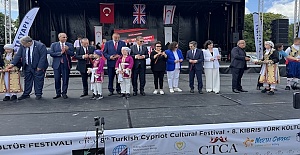 CTCA UK Condemns the Political Forcing Out of Afzal Khan MP for Engaging with Turkish Cypriots
CTCA UK Condemns the Political Forcing Out of Afzal Khan MP for Engaging with Turkish Cypriots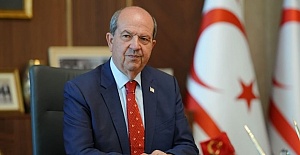 Tatar: “Reaction to MP’s TRNC visit is yet another stark example of the Greek Cypriot leadership’s primitive and domineering mentality”
Tatar: “Reaction to MP’s TRNC visit is yet another stark example of the Greek Cypriot leadership’s primitive and domineering mentality” Margaret Greer has been sworn in as the new Mayor of Enfield
Margaret Greer has been sworn in as the new Mayor of Enfield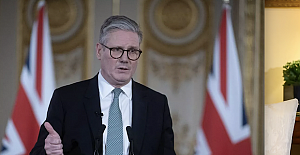 Prime Minister Keir Starmer's 2025 Easter message
Prime Minister Keir Starmer's 2025 Easter message Team Enfield ranks fifteenth the in London Youth Games
Team Enfield ranks fifteenth the in London Youth Games Parking enforcement boosted with more officers on patrol in Enfield
Parking enforcement boosted with more officers on patrol in Enfield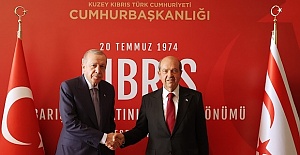 Ersin Tatar meets with President Erdoğan
Ersin Tatar meets with President Erdoğan President Ersin Tatar Holds Ministerial-Level Meeting with UK Minister for Europe
President Ersin Tatar Holds Ministerial-Level Meeting with UK Minister for Europe UEFA Europa League and UEFA Conference League draws to be combined into one single show
UEFA Europa League and UEFA Conference League draws to be combined into one single show EuroLeague schedule for 2025-26 season announced
EuroLeague schedule for 2025-26 season announced Zeynep Sonmez becomes first Turkish tennis player to reach third round at Wimbledon
Zeynep Sonmez becomes first Turkish tennis player to reach third round at Wimbledon European champions Arsenal Women will play all of their league matches at the Emirates Stadium
European champions Arsenal Women will play all of their league matches at the Emirates Stadium Enfield Labour welcomes the completion of A10 average speed cameras extension.
Enfield Labour welcomes the completion of A10 average speed cameras extension. TfL opens 2025 grants for community groups to encourage more walking, cycling and active travel in the capital
TfL opens 2025 grants for community groups to encourage more walking, cycling and active travel in the capital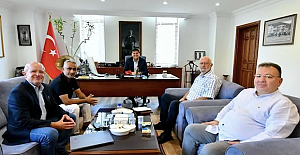 Fethiye Launches International Digital Tourism Campaign with UK-Based Publisher
Fethiye Launches International Digital Tourism Campaign with UK-Based Publisher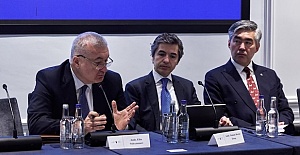 Highlights from the 3rd Trans-Caspian Connectivity Conference in London
Highlights from the 3rd Trans-Caspian Connectivity Conference in London





